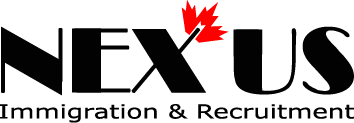
What is the “Flag Pole”? What is the Risk?
It’s the peak season for graduations, and it’s also a popular time for newly arrive students to use the summer break to come and settle down early. For those who have just graduated, there might be a need to apply for a post-graduation work permit. For those already in the country but due to various reasons must wait until the end of June or early July to receive their admission results, there’s a lot of anxiety. Thus, among international student communities, a method of visa switching called ‘Go Around the Border’ has spread. This method is colloquially known as the ‘Flag Pole’ process. When it comes to cross-border and immigration control at the US-Canada border, ‘Flag Pole’ refers to a specific process used especially by those seeking to update or change their immigration status. Here’s a detailed explanation:
What is the Flag Pole process?
The Flag Pole process involves an individual going to a US-Canada border port, briefly entering the United States, and then immediately re-entering Canada to handle immigration matters. This process is typically applicable to those who already hold a temporary status in Canada and need to activate a new visa, work permit, or permanent residency status. By doing so, applicants can process their immigration applications at the border, avoiding the long processing times of submitting applications within Canada. The main advantage of the Flag Pole process is the ability to expedite processing and obtain immediate determinations and feedback. However, applicants need to prepare all necessary documents, including passports, application forms, and supporting documents, and understand the specific requirements and rules of the border port. Below, let’s delve further into the entire Flag Pole process and analyze its pros and cons.
Detailed Process of the Flag Pole
- Going to the Border:
- Individuals travel to a US-Canada border port.
- Leaving Canada:
- You must physically cross and leave the legal geographical markers and boundaries of the US-Canada border, at which point you will immediately encounter US Customs.
- Entering the United States:
- Depending on the discretion of the US Customs officials at the port, and some consequence might happen.
- Re-entering Canada:
- When you turn around to go back through Canadian Customs, and some consequence might happen.
Purpose of the Flag Pole Process
The Flag Pole process is commonly used to avoid the lengthy processing times of immigration applications submitted within Canada. By handling these applications at the border, individuals can often receive decisions immediately.
- Considerations
- Individuals must ensure that they have all necessary documents and relevant application qualifications.
- Caution
- If the passport you use to enter Canada is not from a country that has a reciprocal agreement with Canada (e.g., a U.S. passport), Canadian border officials are not legally obligated to process, approve, or execute any visa or residence permit renewal for you.
Benefits of the Flag Pole Process
- Speed:
- The Flag Pole process is typically faster than the processing times for applications submitted within Canada.
- Clarity:
- Border officials can make immediate decisions and provide clarifications.
Risks of the Flag Pole Process
- Risk of Entry Denial:
- There is a risk of acquiring an adverse record for being denied entry into the United States or Canada, even if temporary, which can complicate the process.
- Travel Restrictions:
- Changes in border policies or restrictions due to health issues or political reasons may affect the Flag Pole process.
Based on the principle of applying and acting according to the law, it is strongly recommended that everyone follows the regulations of the Canadian Federal Immigration Authority. After preparing the necessary documentation, you should promptly submit your application for the desired visa and residence permit. Making unauthorized trips to circle around the US-Canada border not only involves a long journey but also carries considerable risks. It could even result in an adverse record for violating Canadian or foreign immigration laws. Extreme caution is advised.







